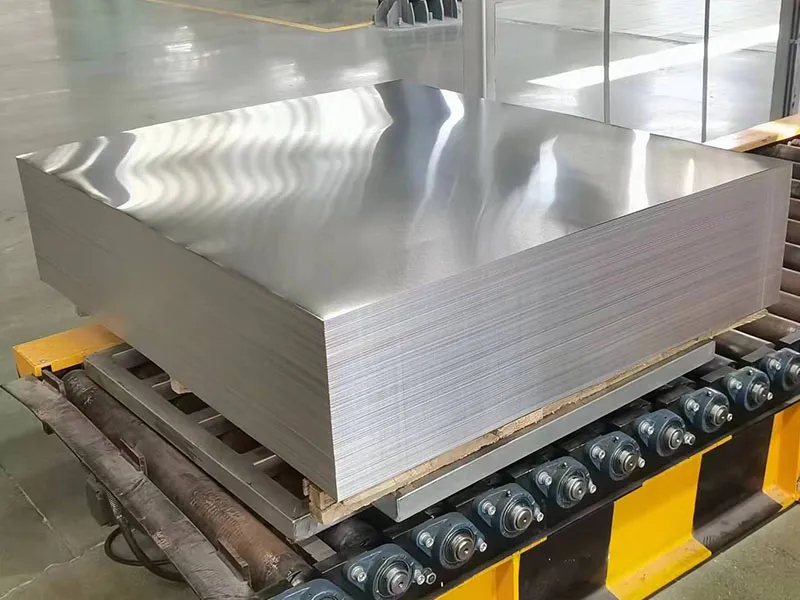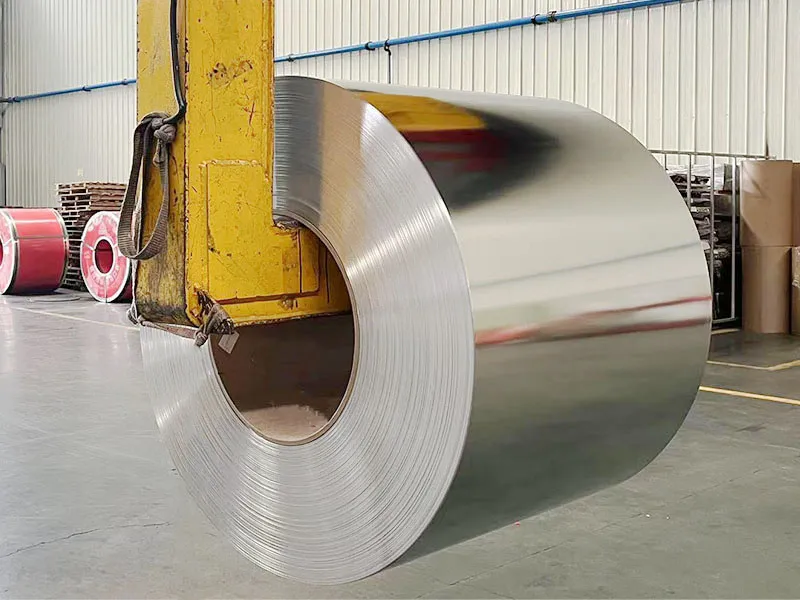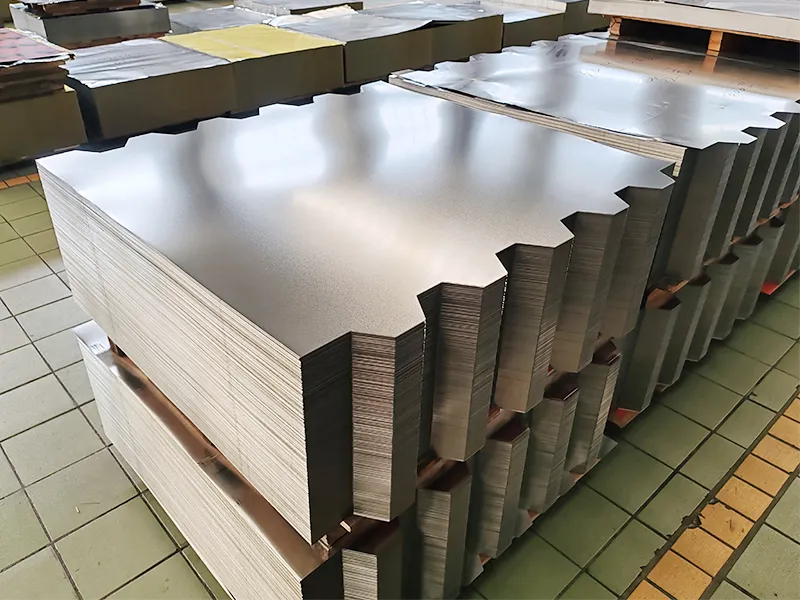As one of the important materials for food packaging, tinplate packaging cans are widely used in the storage and packaging of various foods. With excellent corrosion resistance, good sealing and recyclability, tinplate packaging cans have become the preferred container for canned food, beverages, condiments, etc. In the production process of tinplate packaging cans, printing is a crucial link, and offset printing has become the most commonly used printing method in this field. So, why do tinplate packaging cans for food packaging prefer offset printing?
This article will analyze this issue in depth from multiple angles, including the principle and characteristics of offset printing, the demand for tinplate, and the advantages of offset printing on tinplate packaging cans.

What is the principle of offset printing?
To understand why offset printing is so popular, you first need to understand the basic principles of offset printing. Offset printing (lithography) is an indirect printing method that transfers the image from the printing plate to the substrate through a rubber blanket. This process can be roughly divided into the following steps:
1. Platemaking: Offset printing uses chemically treated plates, and the image area on the plate can absorb oily ink, while the blank area does not absorb ink.
2. Image transfer: The ink on the plate is first transferred to the intermediate carrier-the rubber cloth cylinder, and then the rubber cloth transfers the ink to the substrate (in the case of this article, the surface of tinplate packaging cans).
3. Printing: Due to the softness and elasticity of the rubber cloth, it can be in close contact with the surface of the substrate, even if the surface of the tinplate packaging cans is slightly uneven, it can ensure the uniform transfer of ink.
This indirect printing method, combined with the principle of oil and water repellency, can achieve high-quality printing effects, especially suitable for large-scale color printing. Therefore, offset printing has become one of the widely used technologies in the printing industry.

What is the demand for tinplate packaging?
Before analyzing why offset printing is suitable for the printing of tinplate packaging cans, we need to clarify the special needs of tinplate packaging. As a metal material used in the field of food packaging, the printing of tinplate packaging cans is not only for beauty, but also needs to meet a variety of functional requirements:
Food safety
Food packaging is directly related to the quality and safety of food, so the printed ink must have a high degree of safety. The chemical components in the ink cannot come into contact with food or release harmful substances, so the selection of ink and the control requirements during the printing process are very strict.
Corrosion resistance
Tinplate packaging cans themselves have good corrosion resistance, but the packaging surface still needs to remain stable during long-term use or storage. Therefore, the printed surface must not only be able to withstand physical wear, but also be able to maintain the stability of the image in a humid environment to prevent the ink from failing due to oxidation or other chemical reactions.
High strength and impact resistance
As a food can packaging material, tinplate packaging cans need to withstand large external forces during production, transportation and use. Therefore, the printed pattern on the packaging surface must have a high impact resistance and is not easy to be wiped off or damaged.
High-quality visual effects
Food packaging directly affects consumers' purchasing decisions, so the quality of visual effects is crucial. Tinplate packaging cans need to present exquisite patterns and colors through high-quality printing to attract consumers' attention. This requires the printing method to achieve high-precision detail performance and full color presentation.
Heat and light resistance
Food packaging usually undergoes different storage and transportation conditions, and sometimes needs to be sterilized at high temperatures or exposed to sunlight. Therefore, the printed patterns on tinplate packaging cans must have the characteristics of heat resistance and light resistance to keep the image stable for a long time.

What are the advantages of offset printing in tinplate packaging cans?
The advantages of offset printing are reflected in the following aspects:
1. High-quality printing effect
2. Suitable for large-scale printing
3. High color reproduction
4. Strong ink adhesion
5. Support for a variety of special effects
6. Environmental protection and safety
Based on the above demand for tinplate packaging cans, offset printing has become the preferred method for printing food packaging tinplate packaging cans due to its unique advantages.
High-quality printing effect
Offset printing can achieve very high printing accuracy due to its printing principle, especially in color printing. For food packaging, visual appeal is one of the important factors that determine consumer purchasing behavior. Through offset printing, tinplate packaging cans can present bright colors, clear patterns, and distinct layers of visual effects, thereby enhancing the attractiveness of the packaging.
Offset printing has a strong ability to express details, especially suitable for printing delicate patterns and text. Food packaging usually needs to display product information, brand logos, and complex image designs. Offset printing can ensure that these elements are reproduced on the surface of tinplate packaging cans with high quality.
Suitable for mass printing
The production scale of the food industry is usually very large, especially canned food, and each batch of production often requires a large amount of packaging materials. Offset printing is a very efficient printing method, especially suitable for mass production. Through automated production lines, offset printing can complete the printing of a large number of tinplate packaging cans in a short time, greatly improving production efficiency.
Compared with other printing methods, offset printing is more economical in mass production. When the printing quantity reaches a certain scale, the unit cost is significantly reduced, making offset printing an ideal choice for large-scale production.
High color reproduction
Offset printing uses oil-based ink, which can well show full and delicate colors on the surface of tinplate packaging cans. Food packaging, in particular, needs to attract consumers' attention through bright colors and convey the freshness and quality of the product. The color reproduction ability of offset printing enables the packaging pattern to maintain a high visual consistency under different lighting conditions, thereby improving the overall quality of the packaging.
In the offset printing process, the four-color printing technology (i.e., cyan, magenta, yellow, and black) used can accurately mix the required colors, and can make detailed adjustments to the colors according to the design requirements to ensure that the final printing effect is highly consistent with the design artwork.
Strong ink adhesion
Offset ink has excellent adhesion properties and can firmly adhere to the smooth surface of tinplate packaging cans. Tinplate packaging cans for food packaging will undergo multiple handling and extrusion during production and transportation. Therefore, the pattern on the packaging surface must have good wear resistance and impact resistance. Offset ink has been specially treated to have strong wear resistance and can maintain good image quality during long-term use and storage.
In addition, the ink used in offset printing can form a dense film on the metal surface after drying and curing. This film not only enhances the durability of the printed pattern, but also effectively resists corrosion and oxidation in the external environment.
Support multiple special effects
Tinplate packaging cans for food packaging sometimes need some special treatment on the surface to achieve unique visual effects. For example, some high-end food packaging may use matte, glossy, local gloss and other processes to increase the texture of the packaging. Offset printing technology supports the realization of a variety of special effects, and can meet various complex design requirements through the combination of different types of inks and printing technologies.
This flexibility gives offset printing a great application space in food packaging design, which can help brands better realize creative designs and convey the brand's personality and product characteristics through packaging.
Environmental protection and safety
The safety of food packaging is the most concerned issue for consumers and regulators. The inks used in offset printing, especially special inks for food packaging, must meet strict food safety standards. Offset printing inks are specially formulated to be free of toxic substances and will not release harmful chemicals during printing and curing, which can ensure the safety of food packaging.
In addition, the waste generated during offset printing is relatively small, and modern offset printing equipment has been greatly improved in terms of environmental protection, reducing the impact on the environment. Using inks and printing materials that meet environmental standards can effectively reduce the burden of food packaging on the environment.

Comparison of offset printing with other printing methods
Although offset printing dominates the printing of tinplate packaging cans for food packaging, there are other printing methods, such as gravure printing, screen printing, etc., which also have certain applications in certain specific cases. However, compared with offset printing, these methods have some shortcomings in the application of food packaging:
● Gravure printing: Gravure printing is excellent in printing quality, especially in large-area printing, which can achieve very fine image performance. However, the equipment investment of gravure printing is large, which is suitable for ultra-large-scale production, and the cost-effectiveness of small-scale printing is not high.
● Screen printing: Screen printing is suitable for small-scale, personalized pattern printing, especially thick ink layers and large color blocks. But the resolution of screen printing is relatively low, which is not suitable for food packaging design with more details.

